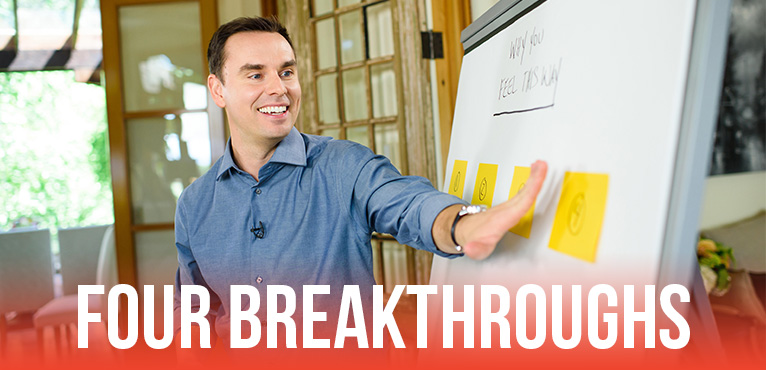SUMMARY
- “You have to ensure mindful striving as a leader. What that means is you’ve got to know when to hit the gas and when to slow it down.”
- What is your style of leadership? In this episode, learn 5 practices for increasing your efficacy as a leader!
- “It’s more important for you to evaluate habits than outcomes.”
- Let today’s training build your presence and mindfulness to better handle the challenges of leadership!
- Watch the video to get the full training.
- Already have the High Performance Planner and CRUSHING each and every day? Let’s celebrate you! Take a photo with your planner and use #GrowthDay so we can find you on social media!
HOT NEWS & DEALS!
-
Get the High Performance System!
If you want to level up personally and professionally, High Performance System is the resource you need. The High Performance System will guide you through developing and implementing the 6 science-backed habits that will move the needle from ordinary to extraordinary. Develop the habits that lead to long-term success, positive relationships, and healthy well-being! Get the High Performance System!
-
Get the GrowthDay app!
Make self-improvement a way of life and get the GrowthDay app! GrowthDay features all your personal development tools, coaching and community in one place. Write your journal, track your habits, take wellness challenges, watch live influencers teaching new life strategies, and join a global community of positive and supportive high achievers excited to improve their lives! Get the app on Apple app store here. Get on Android here. Get desktop here.
DID YOU KNOW?
I give weekly prizes, gratitude and shout-outs to our students, so post a screenshot or video on Instagram and use #TheBrendonShow! I can’t wait to hear your thoughts about this episode!
RELATED POSTS
How to Become Unstoppable
My Secret to How I Win Each Day
Advice to Human Resource and Learning and Development Leaders
How to Motivate Others
Want Change? Start with Yourself



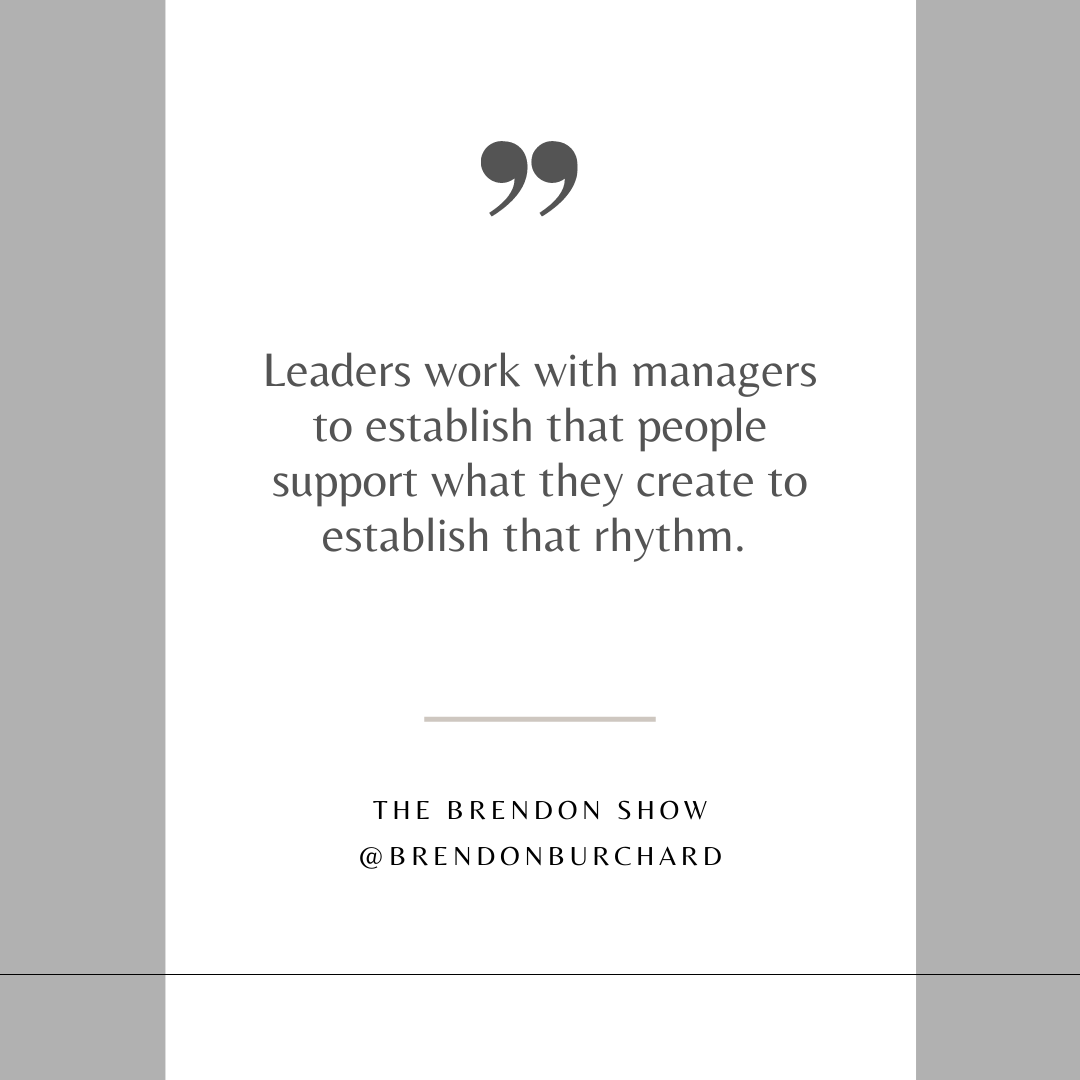
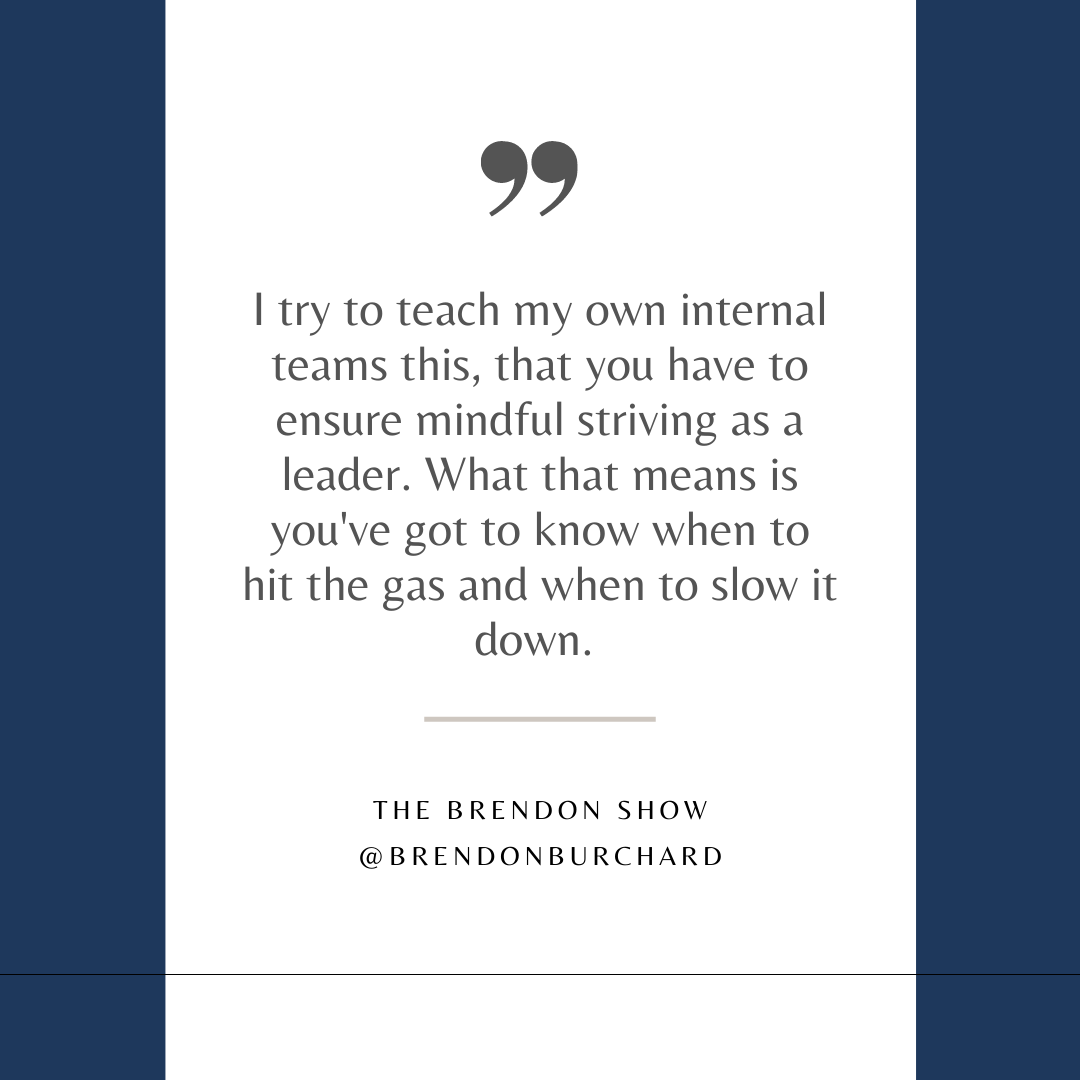
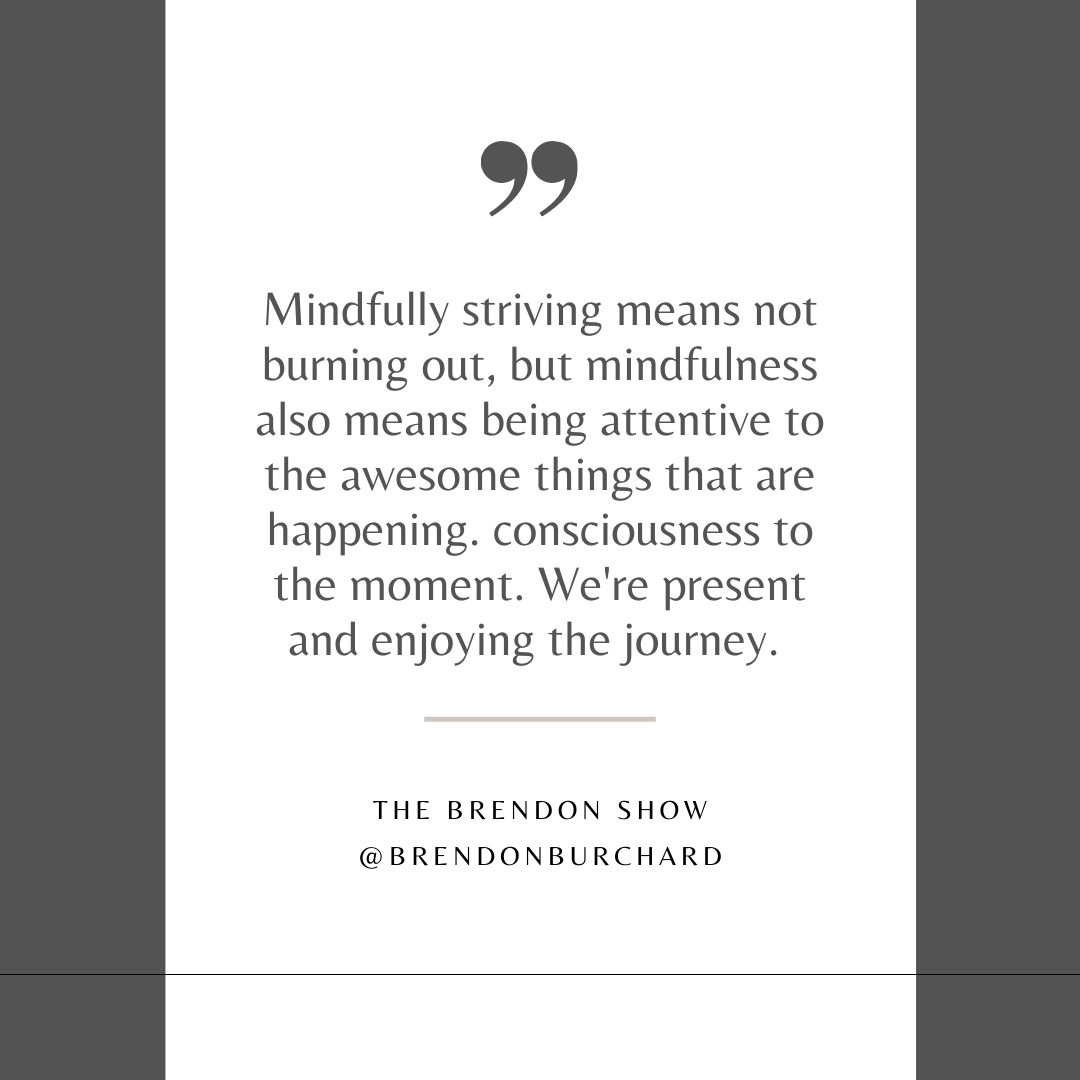
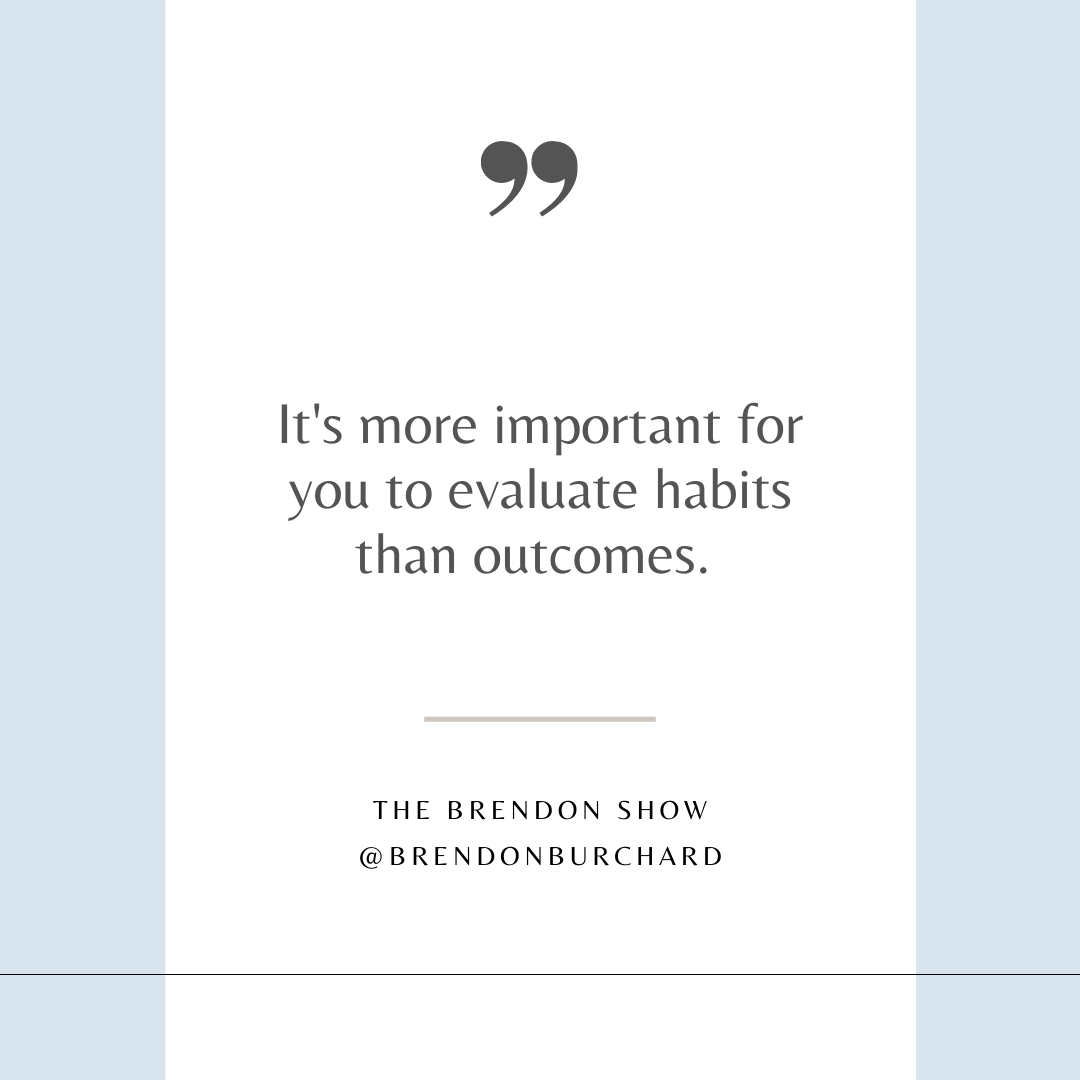
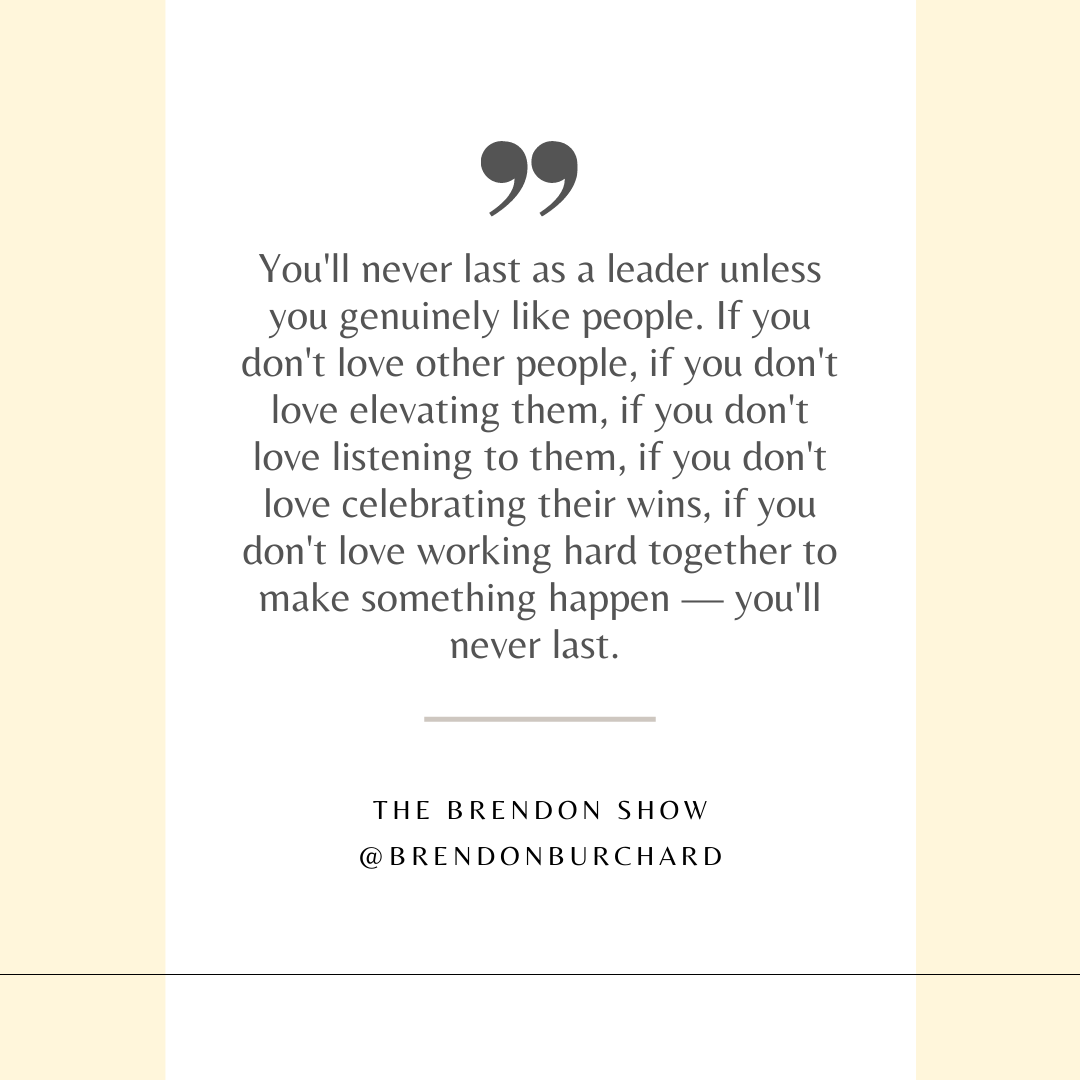
FULL TRANSCRIPT
[The following is the full transcript of this episode of The Brendon Show. Please note that this episode, like all TBS episodes, features Brendon speaking extemporaneously–he is unscripted and unedited. Filmed in one take, The Brendon Show has become one of the most viewed unscripted, direct-to-camera self-help series in the history of YouTube. It has also been the #1 Podcast in all of iTunes and is regularly in the top podcasts in Self-Help and Health categories around the globe. Subscribe to the free motivational podcast on iTunes or Stitcher.)
These next five are just tactical things every leader has got to remember to do in order to allow that forum for people to support what they create for, having those vision decisions for, making sure that there’s alignment and autonomy, for making sure that you’re embodying it and showing it to people and ultimately making sure you’re managing the energy and the resilience of the groups.
1. Establish the Rhythms
So here we go, practice number one is you must establish the rhythm of the teams. You’ve got to establish the rhythm. And what that means is, let’s say you’re running an organization, the rhythm of the organization results in two ways I want you think about it. There’s an internal rhythm. The way that you meet, the way that you set goals, the rhythm of planning your quarter or your OKR is your KPIs. It’s all the internal rhythm of the things that you do to function and run the business, right?
Then there’s the external rhythm. That is your release rhythm. That is your launch rhythm. That’s your marketing rhythm. That’s the public facing publicity rhythm. It’s what the world sees of you. Now, those two rhythms are sometimes different. They’re different organizationally. They’re different in families, and are different in how you might run a new team versus an established team. But it’s so important that you, as a leader, take that on the helm of like, what does that need to look like? And you won’t know, unfortunately until you practice principle number one, people support what they create.
I’ll give you an example. In my company right now, we’ve added a whole bunch of new people and we’re still trying to figure out, okay, what’s this new rhythm going to look like? And so the new team has to come in and see the rhythm we’re doing now. And then we’ve got to adjust and pivot to the new team to establish the norms. You all know this from storms and forming and norming in team research experience. Well, our job is to figure out, okay, what should that rhythm be across the company? Like your all hands meetings and processes, to what each team or each organizational unit does. Or how you’re going to improve. Families have to do this too. So you’re a parent, okay, what’s your family rhythm? What do you do Monday through Sunday? What are your rituals? What are those time slots that you’re going to repeat? You might have a rhythm that you have have with your partner or spouse. You go out on date nights on Fridays, right? Or you might have a rhythm that you have with this child versus that child in order to create that connection with them.
Everything has to be thought of in terms of a rhythm or a ritual or a pattern calendar slot in order for everyone to feel like we’re moving in unison here.
When leaders don’t establish or work to establish with their teams or their culture or their families, what the rhythm is going to be. Everything feels random all the time. Everything feels like we’re fighting fires, fighting, fighting. It always feels like we’re fighting fighters. We’re in emergency mode and we’re going to burn out. And so, I see this all the time. And it’s the hardest part because you, as a leader often don’t know what the rhythm needs to be yet. It has to happen in motion, which is why it’s so important to be a good listener. So many leaders come into new companies, and when they come into new companies, I recently helped the CEO transition into a company where they had 12,000 employees. And I got brought in by the board because he was in trouble.
And so I got his 360 evaluations from the whole team. He’d only been there like six months. Everyone hated the guy. And I couldn’t, like it took a while to figure out, very likable, emotionally intelligent, fun, smart business person. And I’m like, what? What is going on? And what I found out was when he came into the company, he just said, well, this has to be our rhythm. Here are our quarterly goals. These are our yearly goals. This is how we meet and just imposed a rhythm on an existing team. They weren’t ready for that. And so it was like a revolt. And for them, they got used to doing something. This whole thing changed everything, it was too fast. And if you’re an organizational leader, you know that’s super hard. It always happens. Every company goes through it. Transitions in leadership are always difficult, always challenging, but your job is to be aware of that.
And your job, if you’re the person who has that vision decision, you have to work really hard to establish that normal rhythm, normal meeting cadence, normal way about trying to achieve a goal, normal way of managing a project, normal way of meeting a quarterly stretch. You have to establish that. And you’re probably going to need help with it. This is a great distinction between where leadership and management diverge.
Leaders work with managers to establish that people support what they create to establish that rhythm.
And often the leader doesn’t actually manage the rhythm. They help set it up. They agree to it. And then there are project managers. There are mid-level managers, there are other people who are going to make sure that that rhythm happens, right? Same thing might happen in your family. You might say, okay, we’re all going to do this, but you might not be the person who always makes that thing happen. You might have some support. You might have an assistant. You might assign the rhythm of the kids to the older kid. That is if there’s an assignment happening there, but you need to be aware of it and ensure that rhythm is happening with great energy.
2. Repeat the Vision
The second big idea is that in that rhythm, your job as a leader is to consistently repeat, what is the vision? What are our beliefs? What should we focus on and not focus on? It’s a repetition. What’s the vision? What do we believe here? What are we working on? What are you not working on? What’s the vision here? What do we do together here? What do we believe? What do we work on? What do we not? I often teach my own teams, like I call this like fighting for focus. It’s like the leader’s job is to say the same thing so many times it finally sinks in. And you hope when you’re leading teams that they get. It takes years to get it. You can say the same thing.
And I’ve had the blessing of working with US presidents, two of them now, and one of the common things they always share. And you can read this in their books too, from presidential candidates and presidents, literally 200 years back, they all say the same thing. They’re so surprised by how often they have to say the same thing. They can’t believe that they have to go from this organization to that organization, this team that they have to say the same thing over and over they have to repeat it. Here are our values. Here’s our vision. Here’s what we’re after. Here’s where to focus. It has to be so repetitive. You have to build that. People need to hear things. How many times before they get it? Not seven. Dozens, right? They have to hear it seven times to understand it or to repeat it or to memorize it. To operationalize it over the long-term, now you’re talking about hundreds of times. That’s the difference between understanding and memorization, and operationalizing.
That’s why too many leaders get in trouble. They think, I already said it. It’s like you did, you said it. They understood it. But they didn’t operationalize it. So high levels of repetition are the most important things. What are we about here? What do we believe? What are we going to do and not do? So hard, so hard, so hard. Very important that you have that on top of mind.
3. Ensure Mindful Striving
Third thing, third major practice for great leadership.
I try to teach my own internal teams this, that you have to ensure mindful striving as a leader. What that means is you’ve got to know when to hit the gas and when to slow it down.
You got to know when to take on the project. And when not. All, not in terms of how to achieve it because management can do that, but how to achieve it with harmony and sanity and avoiding burnout. And everyone struggles with this because, you know what? If you’re a leader, you probably have a bunch of high performers. You have great talent, right? And if you’re really a high achieving leader, you’ve got amazing talent all around you. And everyone wants to go and go 99.9 miles an hour all the time. But every race you ever see on a track, the cars have pit stops. The car has to take the pit stop in order to function at a high level over and over. So you’ve got to build in the pit stops. You’ve got to build in the celebrations. You got to say, not now, this is one thing. I know you want to do that, but let’s do this. And that always takes a lot of discussion and conversation, but you hold the heart of the organization. You have to know when you’re pushing too hard. And you have to know when you have to just ask for patience, you have to know when it’s letting off the gas a little bit.
You have to know when, like, okay, we’re going to take a little bit less in this revenue or this quarter than we usually would, but you know what? Our people are stretched right now. And that’s the hardest part. That’s really ensuring that there’s a harmony and an ongoing joy and the ability to have high performance. The reason most people don’t like organizational leaders is because the organizational leaders burn them out. They don’t listen and they don’t practice everything we talked about in the principles in the earlier session of this training. And so knowing that you hold the heart and the energy and the resilience of the company reminds you, like how do we ensure that we mindfully strive?
Mindfully striving means not burning out, but mindfulness also means being attentive to the awesome things that are happening.
You know burnout sucks when there’s no appreciation, when there’s no celebration, a lot of people will push themselves super hard, as long as they’re appreciated, and there’s some celebration and we’re making an impact. If you take away the impact you take away the appreciation. Now, it just feels like the grind. No one wants that.
Mindfulness means we establish a peace and a harmony and a gratitude and consciousness to the moment. We’re present and enjoying the journey.
And you ensuring that the journey is being enjoyed by the team, that’s mindful striving. We’re going for big things together, but we’re being mindful. Mindful to one another, mindful to opportunities, mindful to our customers, mindful and grateful for the opportunities at hand.
4. Evaluate the Habits Over the Outcomes
Fourth big idea is as you are trying to evaluate how you’re doing, because evaluating the progress of you, the collaborators, of the vision, is so central to what you constantly have to do. Remember, you kind of have that leadership vision on you. You’re trying to see where we are out of alignment? Where are we not doing well? I always tell this to new leaders or new managers of position, but also to parents all the time.
It’s more important for you to evaluate habits than outcomes.
New leaders tend to obsess about the outcome, the KPI, the OKR. They bemoan. They brutalize everybody on the final results. What’s on the spreadsheet, what’s in the metrics, what’s in the panels, data, and they, it’s all about that. And unfortunately they forget, those things aren’t real. Those things are outcomes. You don’t need to, like, those outcomes happened. Why did they happen? Because there were habits at play. My job isn’t to evaluate the quality of this thing. My job is to evaluate the quality of this thing.
So one reason as an example, my book, High Performance Habits, kind of took over the world because it taught a lot of people. It’s like, measuring people’s personalities or strengths, or a lot of these other assessment tools out there actually don’t correlate with long-term success, wellbeing, or positive relationships. What does? The High Performance Habits. Because our habits create our outcomes over the long-term. Our habits create our real relationships, create peace of mind or not, create the ultimate results. So you’re evaluating the habits of the team more than the outcome. And when you do that, now you’re speaking their language versus speaking the language of this spreadsheet leader. And no one wants to work for the spreadsheet leader. They want to work with the person who has the heart and soul, who can talk about behavior and behavior change and patterns.
And what patterns do you need to recognize? The habits of your team, the habits of your consumers, the habits of your kids, the habits of your spouse, the habits of your community, of your church. Like it’s all about what are our collective habits? Because if we improve those, the panels, the outcomes, the KPIs, and the OKRs get better. But if you start with those and you get obsessed about those, and you’re trying to manage and lead people to those, they get frustrated, bored, detached. It’s not inspiring. What’s inspiring is how do we summon the best of who we are together? That’s inspiring. That’s motivation. That’s leadership.
5. Teach the Sharing of Love
Last big idea here today with you is a simple practice. And I tease this out from the conversation about mindful striving but only because I think it’s so important. And that is you have to teach the teams, teach the people who are leading, teach the people who you’re impacting. You have to teach everybody the importance of recognizing our oneness and sharing love along the journey. That is, we are in this together. And I appreciate you. And I want to celebrate you. I want to make you the hero. I want to elevate other people. It’s that the sharing of love on the journey is so important, yet people forget about it. It’s the heart and the soul of leadership. It’s like, very few people understand that leadership is just a format, a function of loving other people.
You’ll never last as a leader unless you genuinely like people. If you don’t love other people, if you don’t love elevating them, if you don’t love listening to them, if you don’t love celebrating their wins, if you don’t love working hard together to make something happen — you’ll never last.
Please don’t elevate yourself to a leadership position if you dislike people — we don’t need more jerk leaders. What we need is people who are operating from their heart and who love to celebrate other people. And why do they love to celebrate other people? Because they recognize the oneness. They recognize the humanity in others. I’m like you, you’re like me. We can, even though we might see things differently, be from different places, have completely different socioeconomic realities. Here we are together. We’ve decided to pursue this vision together. We have that vision. We’ve made the decision. We’re all in. We’re going to do it together. And as we do it together, if I can ensure that you love the process, that you feel cared for, that you feel celebrated when you win, that we are winning together. That’s sharing the love, man. That’s sharing the love.
Your customers, when you make your customers feel loved, cherished, served, you make them the heroes. That’s where word of mouth comes from. That’s where the community builds. We have to realize it’s like, it’s about sharing the love. It’s just about sharing the love. And you’ve got to find your way of doing that in your rhythm, in how you talk about others with their habits, in how you mindfully strive together in how you practice all the principles that we talked about today. This is leadership. It’s loving what we are doing together. It’s caring for one another. They’re not your followers. They’re your collaborators. Your co-creators. That’s why I love leadership.
